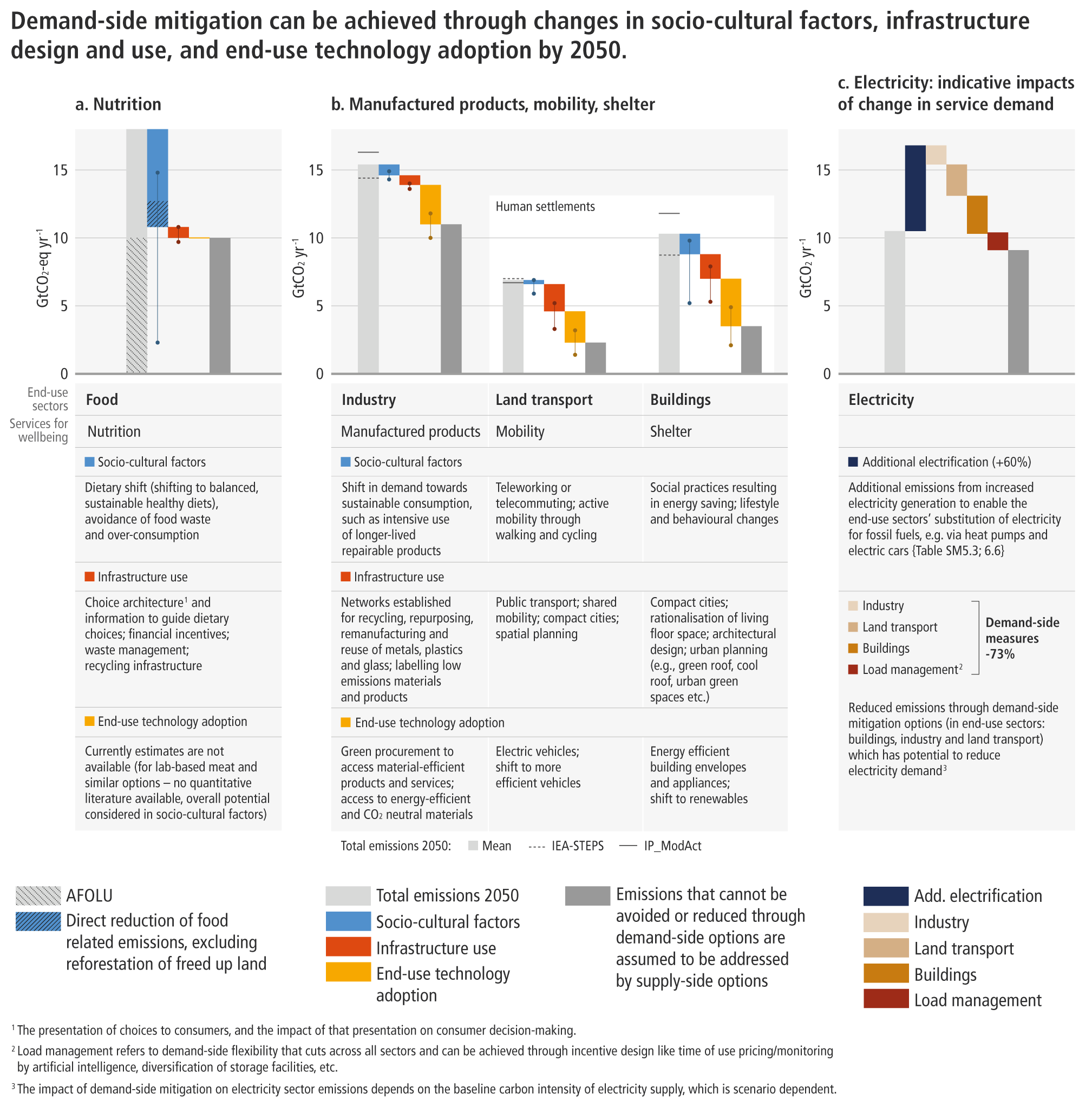What does the latest UN climate change report, published by the Intergovermental Panel on Climate Change (IPCC) on Monday April 5, 2022, say? The detailed report has been summarised by the IPCC into figures that give a clear snapshot of where are, where we want to going and how we can get there.
In April 2021, the warming had already reached 419.28 parts per million (ppm). On May 5, 2022 it was 419.68 ppm according to co2.earth.
While anthropogenic emissions are still increasing (we had already reached 1.2C in April 2021 from pre- industrial time and warming has increases 1.1C since 1850 and 1900), their growth rate was slower between 2010 and 2019 than between 2000 and 2009. However, in order to limit climate change to 1.5C above pre-industrial levels (as agreed in the Paris Agreement), greenhouse gas emissions need to reach their highest peak before 2025. And by 2030, greenhouse gas emissions must be reduced by 43%, according to the report. Unfortunately, that is not where we are headed currently. In fact, according to United Nations Secretary General António Guterres “Current climate pledges would mean a 14% increase in emissions, and most major emitters are not taking the steps needed to fulfill even these inadequate promises.”
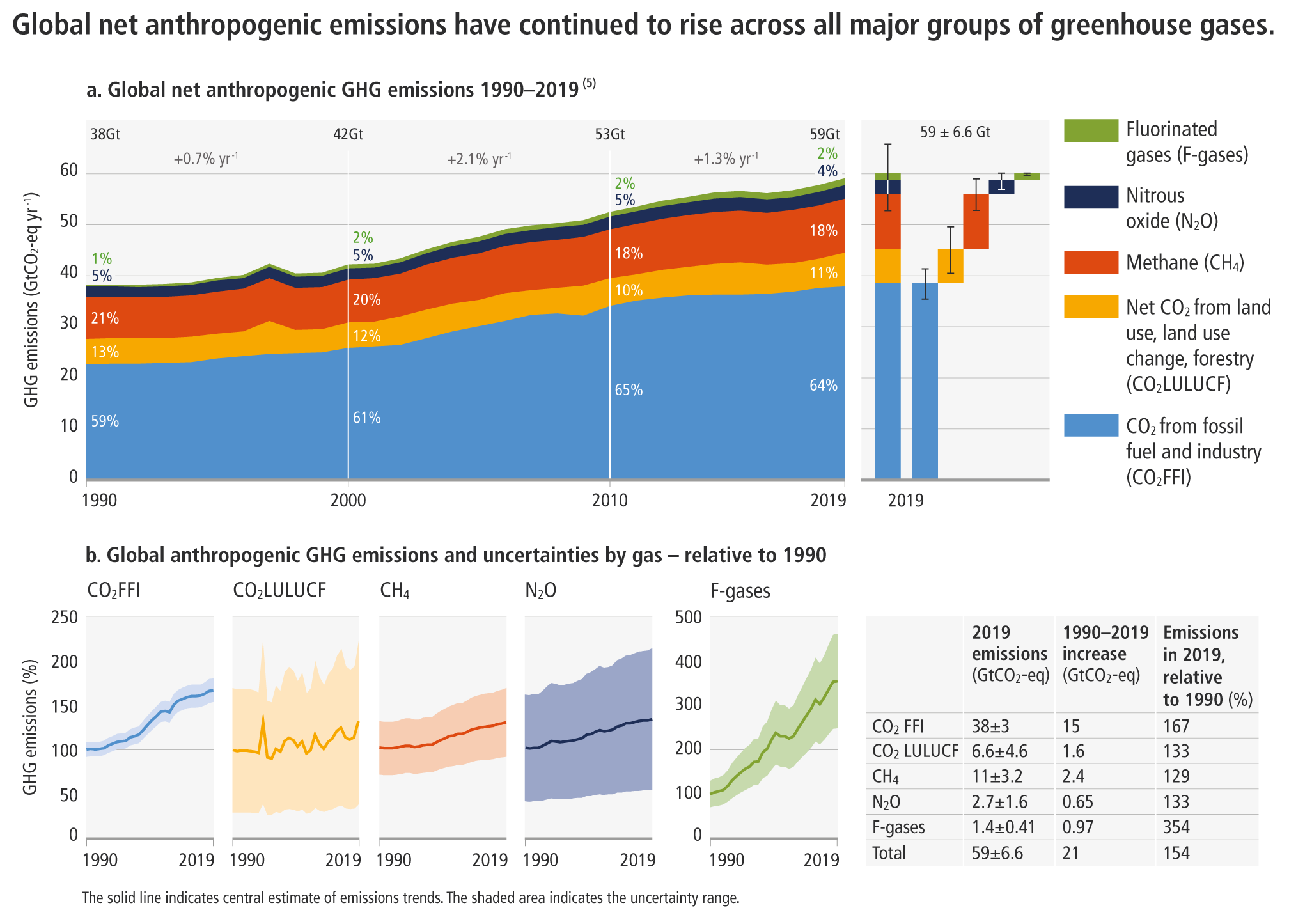
Emissions have increased in every region but are distributed unevenly both in present day and as cummulative emissions since 1850s, highlighted in the chart below. They have mostly come from developed countries as a result of unsustainable energy and land use. The least developed and developing countries are the lowest contributers to climate change but they will be impacted the most, especially island nations that are already starting to face sea level rise.
“Climate change is the result of more than a century of unsustainable energy and land use, lifestyles and patterns of consumption and production,” said IPCC Working Group III Co-Chair Jim Skea in a written statement published with the report. “This report shows how taking action now can move us towards a fairer, more sustainable world.”
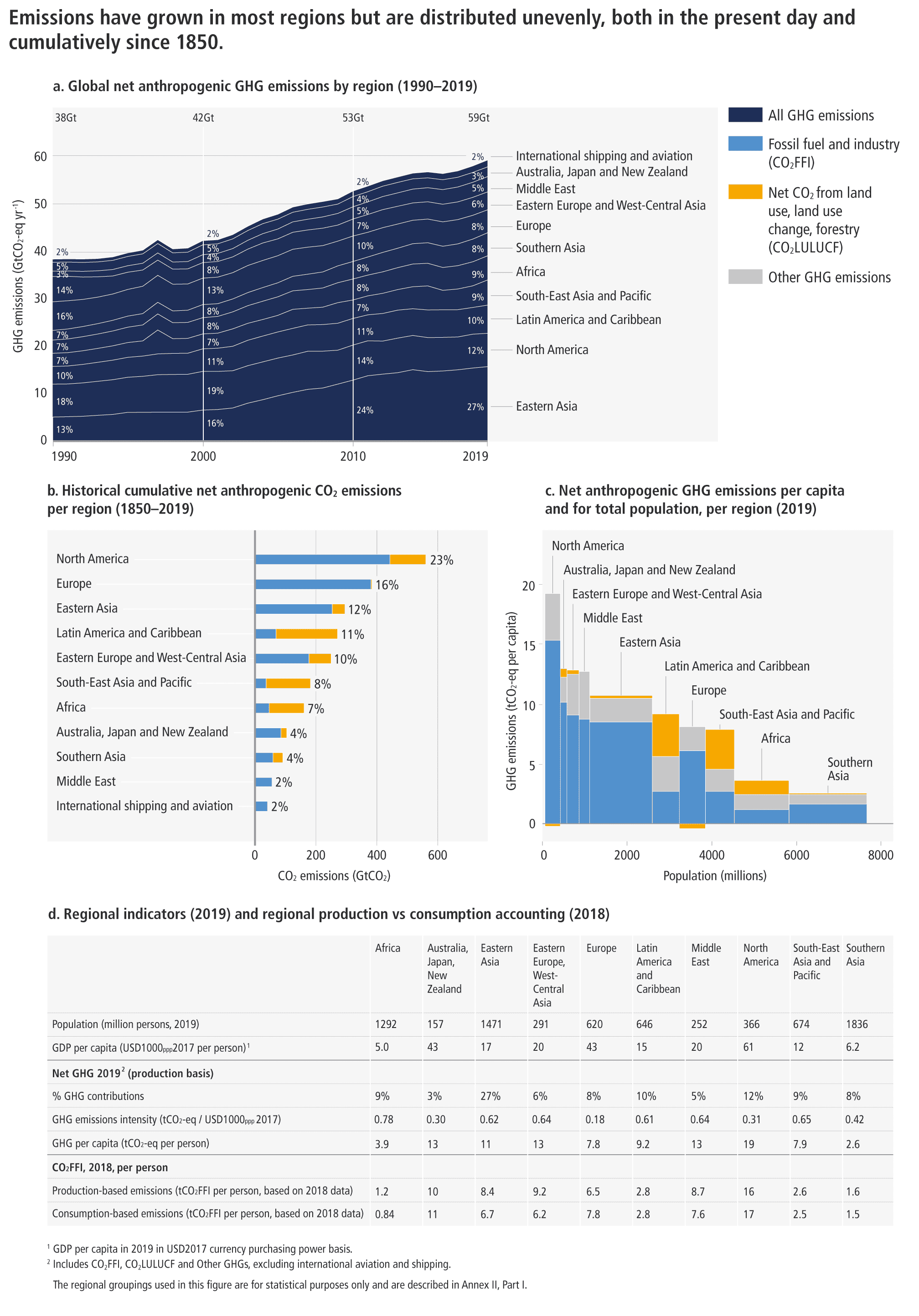
There is some good news. The cost of renewable energy sources such as wind and solar have progressively dropped due to increased efforts in new development and scaling up. Renewables are already far cheaper than other sources, as the chart below indicates – cost of solar energy has decreased by about 85% and wind has reduced by 50% over the last decade.
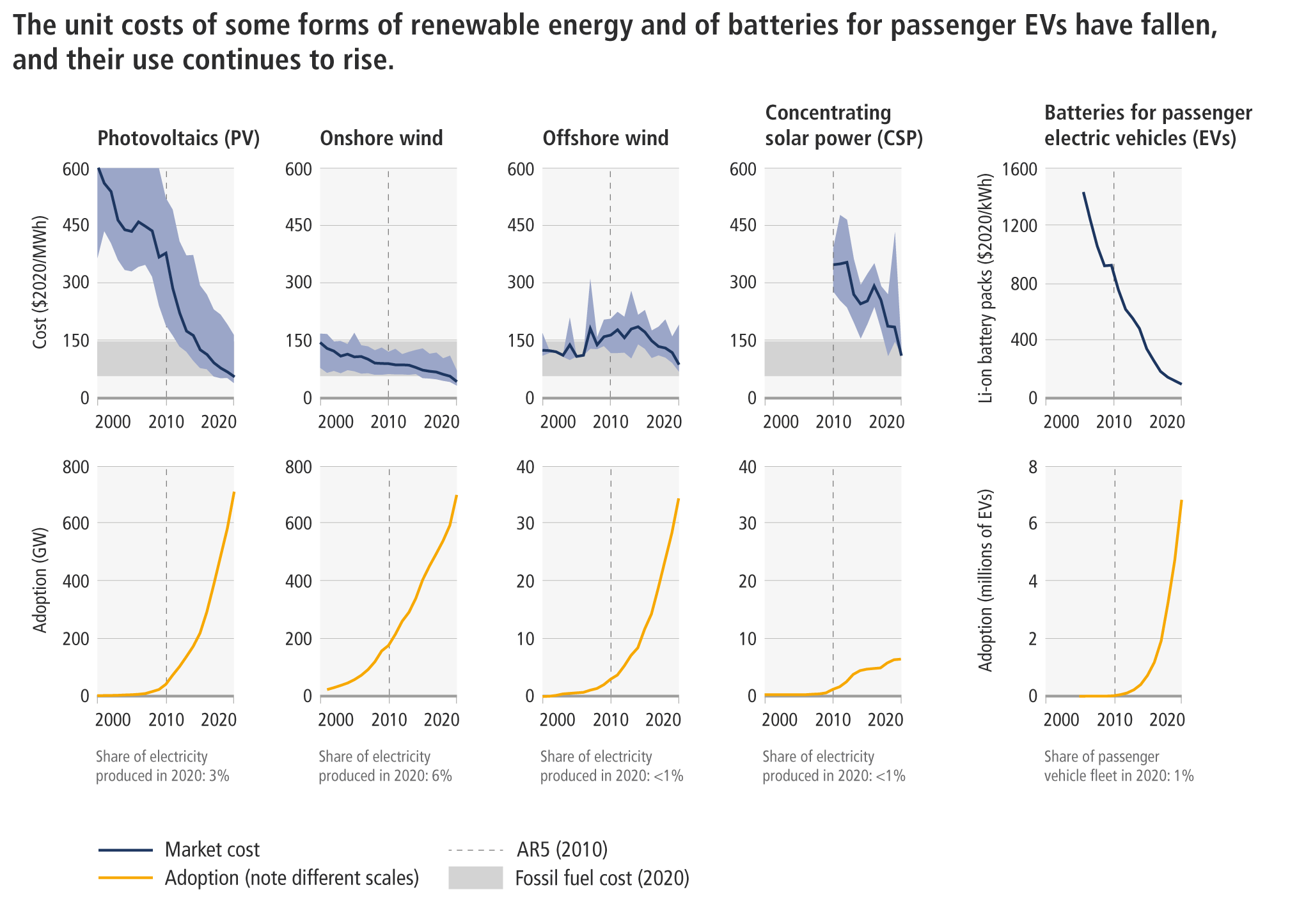
However, current climate action is still insufficient and projected global GHG emissions from countries’ Nationally Determined Contributions (NDCs) announced prior to COP 26 would make it likely that warming will exceed 1.5C, and furthermore, make it harder to limit it to below 2C after 2030, as indicated in the chart below.
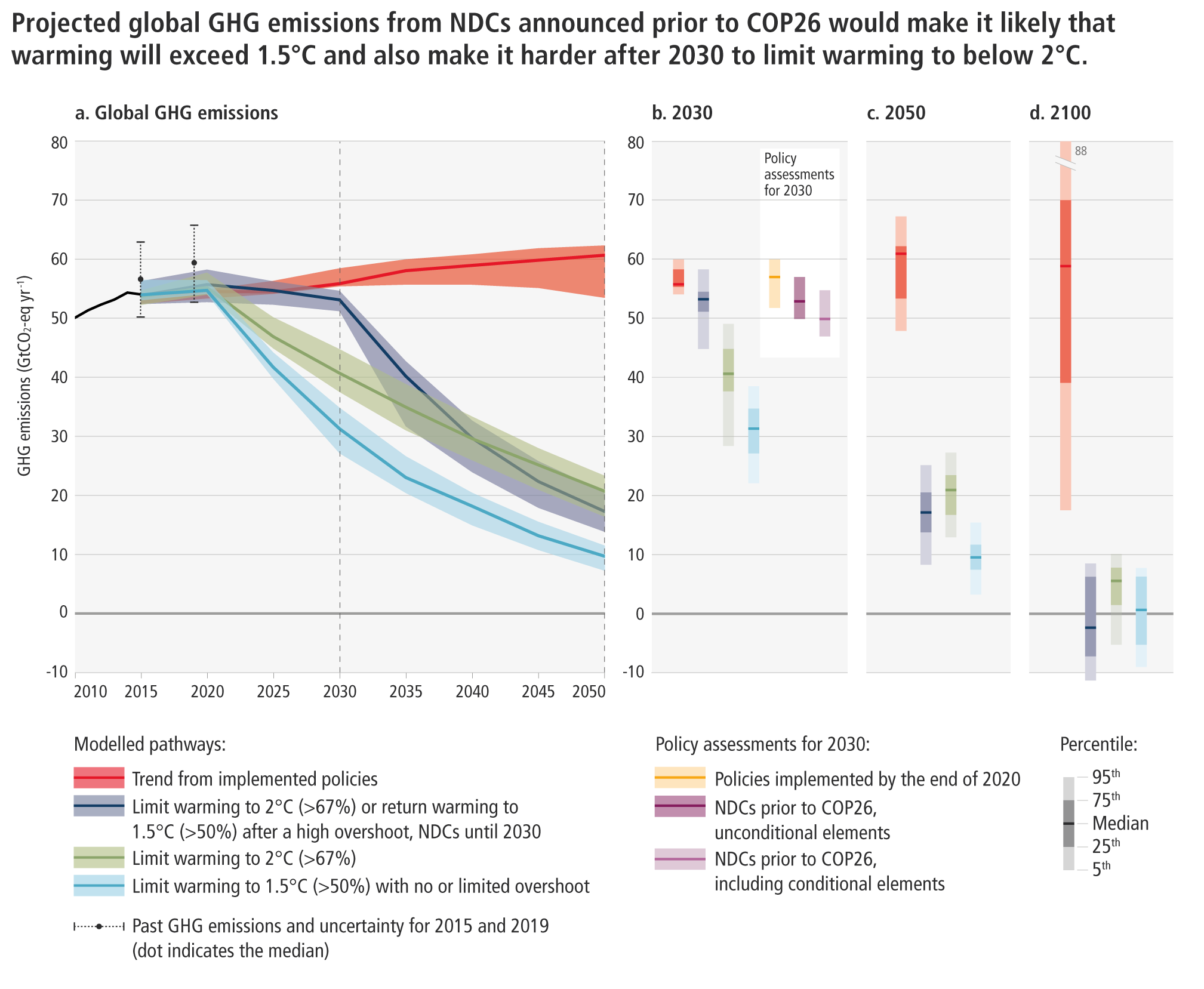
Different scenarios show that more aggressive actions need to be undertaken to decrease warming as can be seen in the chart below, which indicates 8 response scenarios. The light blue (C1) is the most aggressive and will result in the least warming, while the red (C8) is less aggressive and will lead to more warming.


The following chart shows the sectors where emissions come from, with mitigation pathways that can get us to net zero.
According to the press release, “Limiting global warming will require major transitions in the energy sector. This will involve a substantial reduction in fossil fuel use, widespread electrification, improved energy efficiency, and use of alternative fuels (such as hydrogen). Cities and other urban areas also offer significant opportunities for emissions reductions. These can be achieved through lower energy consumption (such as by creating compact, walkable cities), electrification of transport in combination with low-emission energy sources, and enhanced carbon uptake and storage using nature. There are options for established, rapidly growing and new cities.”
“Reducing emissions in industry will involve using materials more efficiently, reusing and recycling products and minimising waste. For basic materials, including steel, building materials and chemicals, low- to zero-greenhouse gas production processes are at their pilot to near-commercial stage. This sector accounts for about a quarter of global emissions. Achieving net zero will be challenging and will require new production processes, low and zero emissions electricity, hydrogen, and, where necessary, carbon capture and storage. Agriculture, forestry, and other land use can provide large-scale emissions reductions and also remove and store carbon dioxide at scale. However, land cannot compensate for delayed emissions reductions in other sectors. Response options can benefit biodiversity, help us adapt to climate change, and secure livelihoods, food and water, and wood supplies,” the press release adds.
“The global temperature will stabilise when carbon dioxide emissions reach net zero. For 1.5°C (2.7°F), this means achieving net zero carbon dioxide emissions globally in the early 2050s; for 2°C (3.6°F), it is in the early 2070s,” concludes the press release.
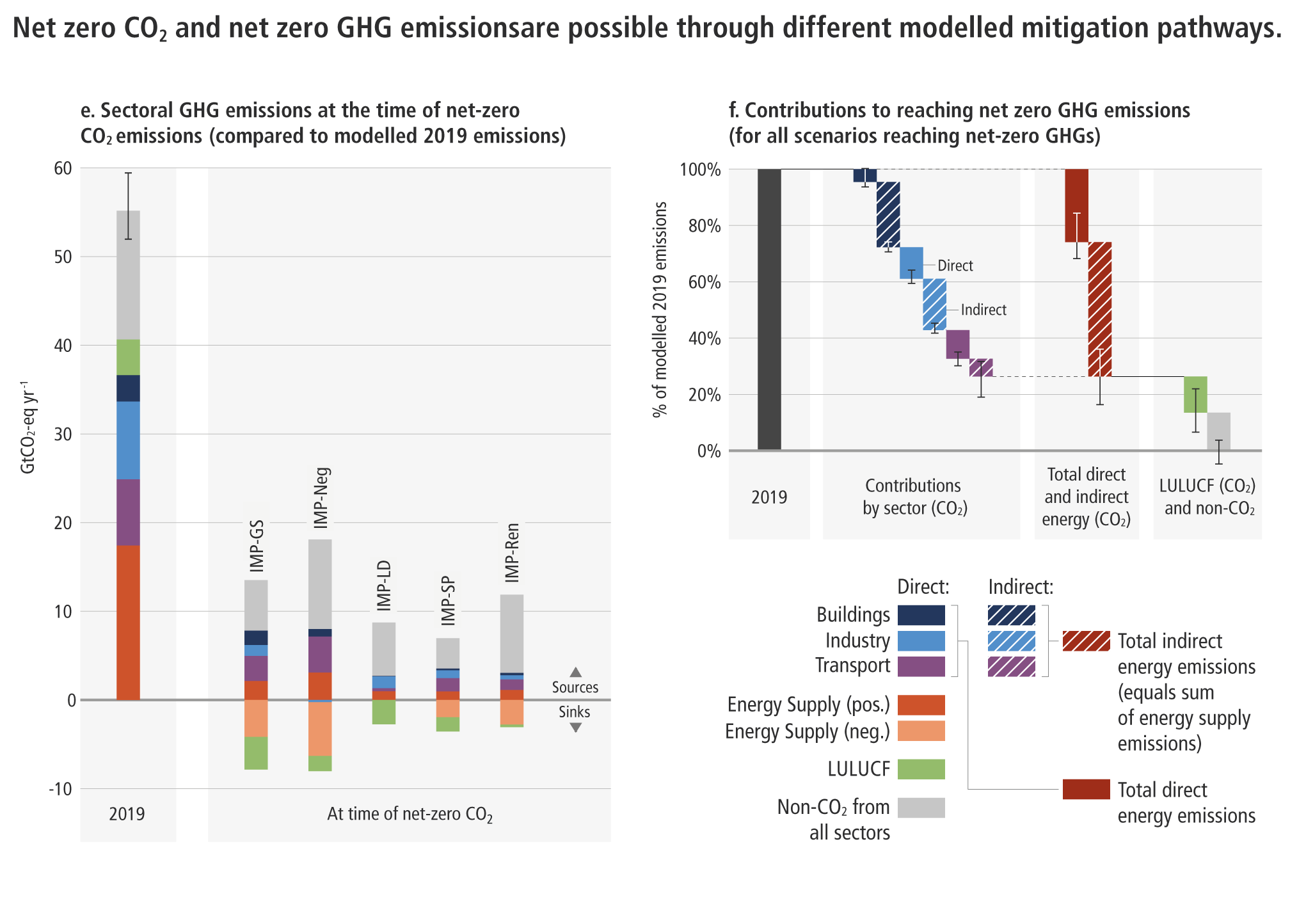
The chart below provides an overview of mitigation options and technologies, as well as their estimated ranges of costs and potential in 2030. There are many options available now in all sectors that help reduce net emissions. There are also synergies and trade-offs between sectoral and system mitigation options and the UN’s 17 Sustainable Development Goals.
According to the written statement,”Accelerated and equitable climate action in mitigating and adapting to climate change impacts is critical to sustainable development. Some response options can absorb and store carbon and, at the same time, help communities limit the impacts associated with climate change. For example, in cities, networks of parks and open spaces, wetlands and urban agriculture can reduce flood risk and reduce heat-island effects. Mitigation in industry can reduce environmental impacts and increase employment and business opportunities. Electrification with renewables and shifts in public transport can enhance health, employment, and equity”.
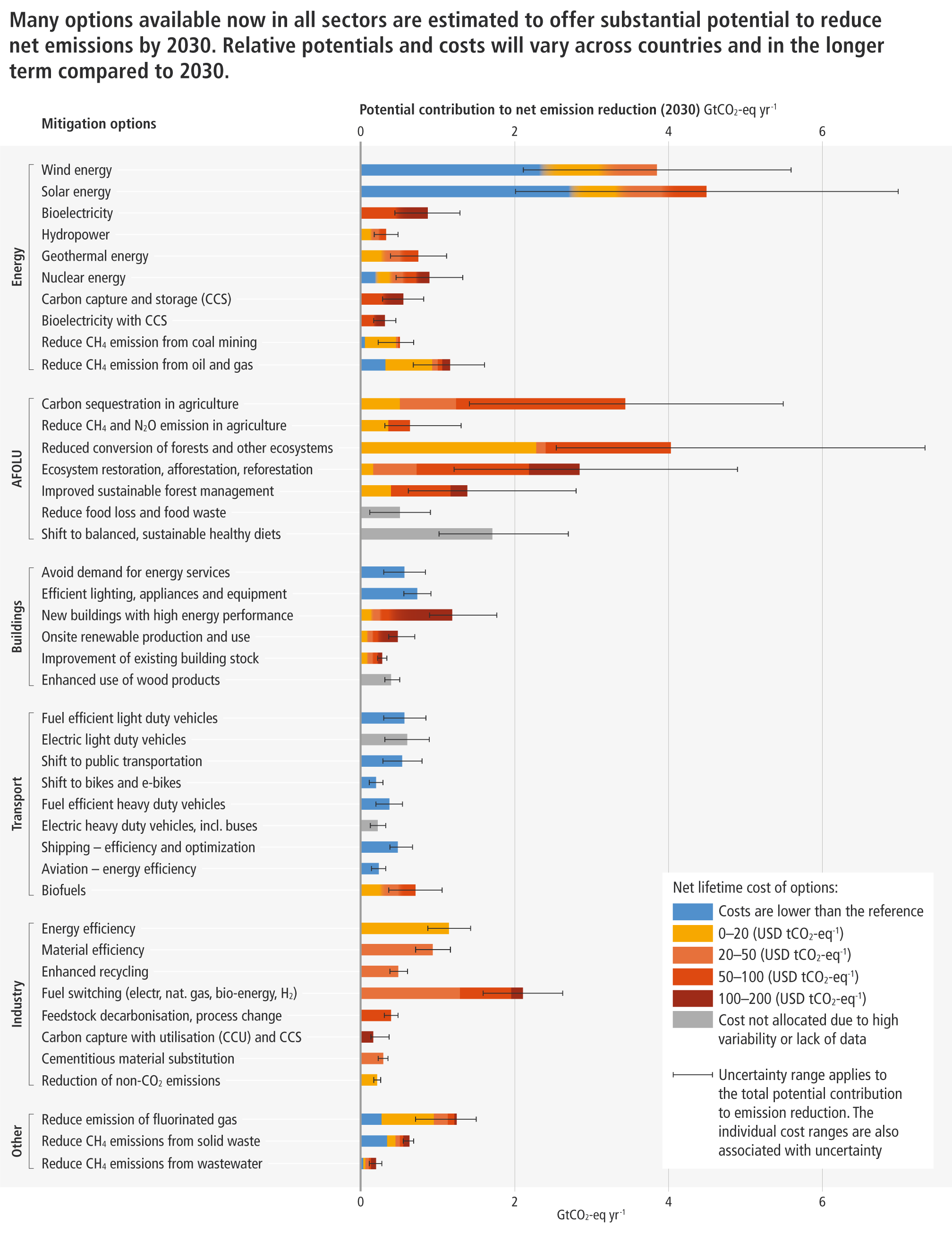
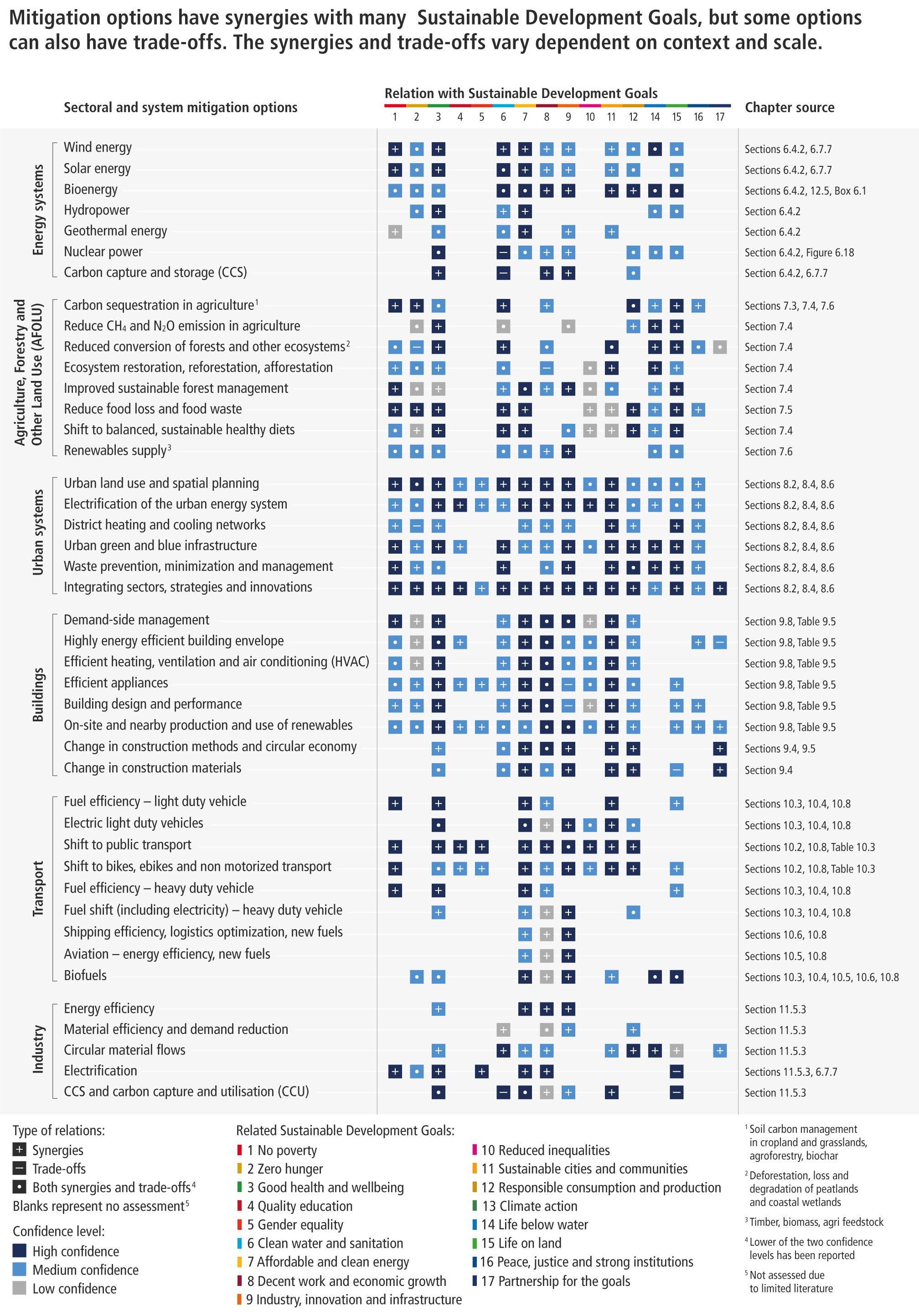
What can we, the people, do? Ultimately, our actions can lower demand for energy intensive, carbon emitting technologies and products. Demand-side mitigation has huge potential and can be achieved through changes in three main areas: socio-cultural factors, infrastructure design and use, and end-use technology adoption by 2050.
“Having the right policies, infrastructure and technology in place to enable changes to our lifestyles and behavior can result in a 40-70% reduction in greenhouse gas emissions by 2050. This offers significant untapped potential,” said IPCC Working Group III Co-Chair Priyadarshi Shukla, in the written statement. “The evidence also shows that these lifestyle changes can improve our health and wellbeing.”
Buildings will need to become more efficient. “We see examples of zero energy or zero-carbon buildings in almost all climates,” said Skea. “Action in this decade is critical to capture the mitigation potential of buildings.”
